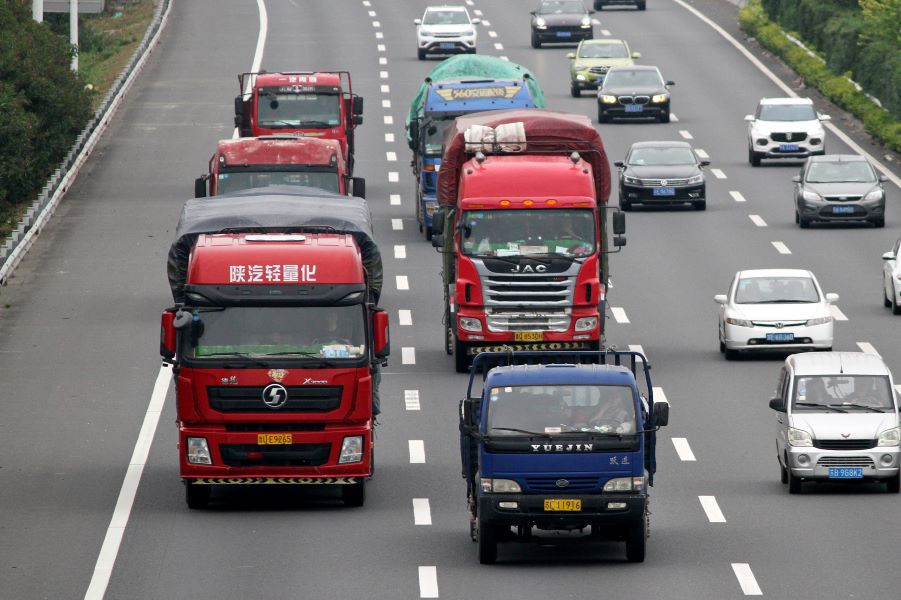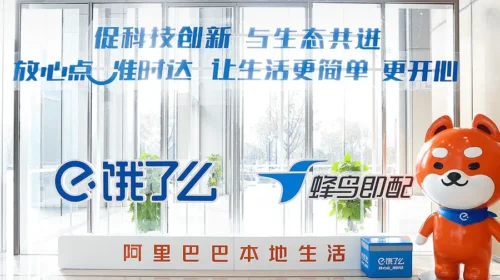Investors Take Comfort in Full Truck Alliance’s Business Update

Shares of trucking logistics specialist are up more than 40% over last week after it said its order volume grew 88% in the second quarter
Key points:
- Full Truck Alliance’s stock is down by a third since its June IPO as it faces a cybersecurity review that has yet come to reach conclusion
- The company’s shares have rallied over the last week after it revealed its order volume and gross transaction value rose 88% and 58%, respectively, in the second quarter,
By Mo Yelin
We may be banned from seeking new business for now. But don’t worry, the business we have is doing quite well.
That’s the message coming in the latest disclosure from logistics company Full Truck Alliance Co. Ltd. (YMM.US), as it seeks to prop up its stock that is down by a third since its U.S. listing in late June. The company was one of two singled out by China’s cybersecurity regulator in early July for posing a potential data security risk, just one week after its trading debut.
Since then its two major apps have been removed from the country’s app stores. That means it can no longer sign up new users while it waits for results of a regulatory review for those apps, Yunmanman and Huochebang, Full Truck Alliance (FTA), whose platforms connect truck drivers to business that need to transport goods, said in a statement last week.
“FTA will fully cooperate with the Cybersecurity Review Office to facilitate its review process,” the company said. “During the cybersecurity review, Yunmanman apps and Huochebang apps are required to suspend new user registration, and the extent of the impact on FTA’s business will be affected by the duration of the suspension.”
The explanation – together with some encouraging preliminary second-quarter data that we’ll look at shortly – had a calming effect on the company’s battered stock. By the end of Wednesday, FTA’s American depositary shares (ADSs) traded at $12.53 – up 44% from a post-IPO low last week at the time of the announcement.
Still, the shares are now about 34% below their June 23 IPO price of $19. The plunge has been in line with a broader sell-off for U.S.-listed Chinese stocks amid a wave of regulatory moves by Beijing to rein in the country’s technology companies.
The selloff has left investors with big losses, but created a bonanza for firms specializing in shareholder lawsuits. On Monday, a dozen such firms issued similar press releases calling on investors to join in their class action lawsuits seeking damages from the company for failing to reveal it faced an imminent regulatory review in its IPO prospectus.
Those actions came after the U.S. securities regulator said last Friday that Chinese companies won’t be allowed to raise money in the U.S. unless they fully explain their legal structures and disclose the risk of Beijing interfering in their businesses.
While FTA’s explanation of the investigation may have eased investor concerns, those investors were probably even more encouraged by some solid numbers also contained in the company’s statement. Those showed FTA facilitated 36 million fulfilled orders with gross transaction value (GTV) of 74 billion yuan ($11.5 billion) in the three months through June, representing 87.9% and 57.8% year-over-year growth, respectively.
While solid, that growth was down sharply from this year’s first quarter when the company’s fulfilled orders and GTV rose 170.2% and 108.0% year-over-year, respectively, according to its IPO prospectus. But here we should note that year-ago figures were probably depressed since the first quarter of 2020 was the height of China’s Covid-19 outbreak.
China’s Uber for Truckers?
Cybersecurity threat aside, we’ll spend the rest this space looking more deeply at the market where FTA operates and how its business model and fundamentals compare with rivals.
China’s trucking shipments market was worth 5.3 trillion yuan in 2020, with only 4% conducted through online platforms, according to data from China Insights Consultancy (CIC), which forecast that online penetration will reach 18% by 2025. FTA is the largest digital freight platform in China with GTV topping 173.8 billion yuan in 2020. By the end of the year, about 2.8 million truckers had used its platforms to fulfill shipping orders, or about a fifth of the country’s heavy- and medium-duty truck drivers.
But FTA’s leading market position by GTV hasn’t translated to the same position in revenue terms. In those terms, FTA’s largest rival ForU, which also filed a prospectus to list in the U.S. in May, is the industry’s largest player, according to CIC. Unlike FTA, ForU’s shares have yet to make a trading debut and its IPO appears to be in a state of suspension following its latest filing on June 2.
FTA’s revenues of 2.58 billion yuan for 2020 were well below the 3.5 billion yuan reported by ForU for the same year.
The difference stems from the two companies’ different business models. FTA is essentially a software company that matches truckers with goods shippers, and derives most of its revenue from fees it collects for that service. By comparison, ForU is a more active middleman that gets most of its revenue by pocketing the difference in fees paid to truckers and money it collects from companies that need goods shipped.
That means ForU may be more aptly called “China’s Uber for freight,” even though international media have given that title to FTA.
Many believe ForU’s model is healthier for long-term success. That’s because such a model typically requires operators to stringently track orders on their platforms to ensure their own profitability. By acting as the direct interface for parties on both sides of each shipping transaction, it also reduces the chance of conflicts between drivers and shippers. The downside is that such a model has higher costs, including costs related to technology and a stricter system for vetting drivers.
FTA has also slowly started to adopt a model more similar to ForU’s. Last August it rolled out a pilot project to collect commissions from truckers on selected types of shipping orders in the cities of Hangzhou, Huzhou and Shaoxing. Such commissions are still just a tiny fraction of its business, accounting for only 1.7% of its total revenue in 2020.
FTA is still operating in the red, posting a net loss of 3.6 billion yuan in 2020. The red ink slowed sharply in the first quarter of this year, when the company posted a net loss of 197 million yuan on revenue of 867 million yuan. ForU is also losing money.
In valuation terms, FTA currently trades at a relatively high price-to-sales (P/S) ratio when compared with traditional logistics companies. Based on its 2020 sales and a market value of $12.7 billion, FTA’s current P/S stands at 32. JD Logistics, affiliated with the Chinese e-commerce giant JD.com, trades at a P/S of just about 2, while Yunda Express, one of China’s largest private logistics firms with a focus on ecommerce, trades at an even lower P/S of 1.2.
But again, we should note such multiples may be less relevant here, since FTA only collects modest middleman fees without providing any actual shipping services. By comparison the others collect significantly higher fees for providing actual shipping services, but also incur significantly higher costs related to those services.
To subscribe to Bamboo Works free weekly newsletter, click here






